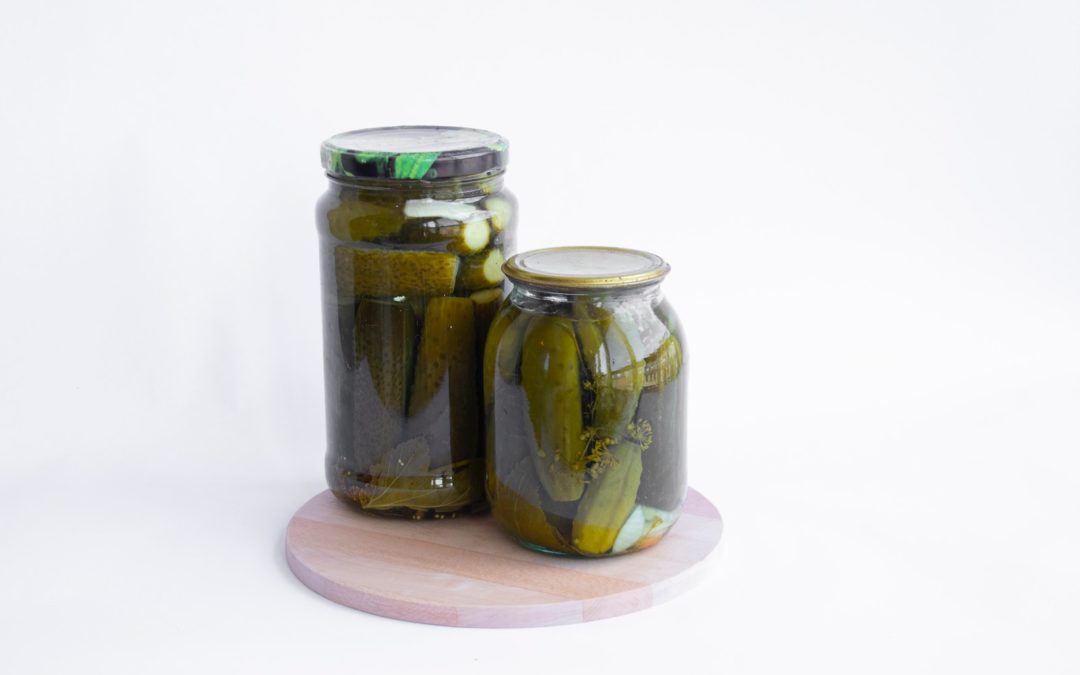How is a Christian like a pickle?
This is the question I use to start off each school year with my seventh graders.
At first, the question feels like a joke, but it’s really the start of one of my favorite lessons on faith.
When I first started teaching, I was called to a position where I taught one grade level of religion. Having no experience in this area, I leaned heavily on the teacher’s guide that came with our curriculum. But after only a few weeks, I was struggling. Each day I could tell by the looks in my student’s faces that they were bored. It wasn’t that the lessons in the curriculum were bad lessons. Instead it was my implementation of them that lacked something important: hands-on activity.
Every lesson that I taught in those first few weeks followed the same basic format: read from the bible, answer some workbook questions, and discuss as a class. The students were never asked to get up and talk to a partner to get their blood flowing. They never had to think critically to solve a problem. They never had to form a hypothesis or experience a real-life example of what the Bible was teaching. As a result, my religion lessons weren’t relevant to my students. Worse, they weren’t very memorable.
All of the things that make science, art, and math interesting subjects were the things that were lacking in religion. I needed to incorporate the principles of STEAM.
This lightbulb moment came as I was preparing to teach my sixth graders about the Tabernacle. As I read through the teacher’s guide, I knew I needed to make it more complex for my relatively advanced students. So instead of simply focusing on the fact that Israelites worshiped in a mobile sanctuary, we focused on what it would take to actually move and build the Tabernacle in the first place.
To do this, I created a math project.
The Bible clearly outlines the number of cubits that the Tabernacle was to be, and with some basic research on the internet, my students were able to translate the size of a cubit into meters and centimeters. The challenge? My students had to build a scale model of the Tabernacle and all of its components using Lego.
In the end, this wasn’t the simple one day lesson that the textbook included, but it was one that stuck with them. The critical thinking and mathematical computations required to complete this challenge resulted in a much deeper understanding of the complexity and magnitude of creating a portable temple.
After this lesson’s success, it became clear to me that using STEAM projects and object lessons was a much more engaging way to study the Bible. Teaching the faith, I concluded, needed to mimic the way our faith is formed and strengthened: with curiosity, inquiry, and dedication to the scriptures. It shouldn’t just be the reading of a book and the answering of questions.
…which brings us back to pickles.
My lesson on pickles is all about understanding the importance of studying the Bible. As a middle school teacher, my students are always ready to ask, “Why do we need to learn this stuff?” With religion, it’s pretty easy to answer that question. Knowing the full story of God and his people helps us understand our need for a savior and brings us to faith. But instead of simply answering this question for my students, I let them suss it out themselves.
The first step in this lesson is to analyze three pickle recipes: refrigerator pickles, fermented pickles, and quick (or hot-brined) pickles. As students work in groups to read through the recipes and cooking instructions, they complete a venn diagram. Afterwards, we discuss the similarities and differences, writing the student’s conclusions up on the board. We’ve activated our science and math minds with this lesson, interpreting and comparing sets of data.
And then I ask my students our essential question again. How is a Christian like a pickle?
As we talk about it, students come to the conclusion that even though cucumbers may take different journeys to becoming a pickle, in the end, it still becomes a pickle. Similarly, Christians don’t all have the same faith Journey.
We also talk about how different denominations have different practices and beliefs, but just like Paul instructed the churches in his letters, those different practices do not a Christian make. What makes a Christian is the unifying idea of the Trinity. (If you take a closer look at the center of a three-topic venn diagram, you’ll notice a familiar symbol in there. My students were the ones to point that out to me this year.)
The next day, I give my students all of the ingredients that they need to make their own refrigerator pickles, only this time, I don’t give them the recipe. Some groups take on the challenge and make a batch of suspicious pickles. Some groups never agree on what to include and don’t even get started.
And then I ask again: how is a Christian like a pickle?
Without the recipe, it’s pretty hard to know how to do it right. Maybe with practice you could consistently make good pickles, but you need to use the recipe several times before you make it to that point. Even then, those pickles might not always come out exactly the same.
In the same way, a Christian needs a recipe book for Godly living. Simply reading it once might give us a good idea of what a Godly life looks like, but it will be hard to put it into practice without consistent reminders. Our innate sinfulness doesn’t make it easy to do good without guidance.
On the last day of our experiment, I make a batch of pickles for the students using the recipe. I pour all of the ingredients into a tupperware and let students take turns carefully shaking it up. After just a few minutes, I open up the container. Any student who wants to try a “pickle” is welcome. Nearly all of the students spit it back out onto their plate.
“What’s wrong?” I ask.
“It’s just a vinegar cucumber!” Students shout back.
“Well, what did we do wrong?”
Because they’ve studied the recipes on the first day of this mini-unit, they all know immediately. The problem with these pickles is that we didn’t actually give them time to pickle. Refrigerator pickles must soak overnight, they tell me.
“So how is a Christian like a pickle?” I ask.
And then my students get it. We can’t just read the stories once and expect it to shape our faith. We have to soak in the Word and let it soak into us. We must be in it continually. That’s why we study religion.
“But what about the pickles with the hot brine?” Someone remembers back. From the recipes, my students know that pickles can be made faster when the pickling liquid is heated. This is my favorite question.
“What does it mean to be in hot water?” I ask them, referring to the common idiom, and the lightbulbs click on. Sometimes in our lives we have troubles, I tell them. Those troubles can have a profound impact on our faith when we set our eyes on the Lord and trust him in our trials. The boiling water in those recipes are like the tough situations we face. Sometimes difficulty will help us pickle faster.
“Why do we need to learn this stuff?”
Sure…I could answer this question quickly and effortlessly. It would certainly take less time than a three day discussion about pickles. But in the end, it’s more important for me to see all of the faith-based questions that students come up with when given the chance to be curious. It’s more exciting to see all of the connections that students make between their faith and an everyday object. Using the process of experimentation stretches students’ thinking and activates their creativity. If nothing else, it makes religion class a little bit more fun.
Studying the Bible isn’t always the most exciting content, but when we let the students use their hands to help their brains understand, we get a lot more learning done.
Give it a try and incorporate a STEAM lesson into your religion class.
Want some inspiration for some hands-on religion lessons? Check out Smashed Tomatoes, Bottle Rockets: …and Other Outdoor Devotionals You Can Do With Your Kids by Tim Shoemaker (2007) or Faith and Science with Dr. Fizzlepop: 52 Fizztastically Fun Experiments and Devotions for Families by Brock Eastman (2021). And happy experimenting!
Photo by Леся Терехова from Pexels




